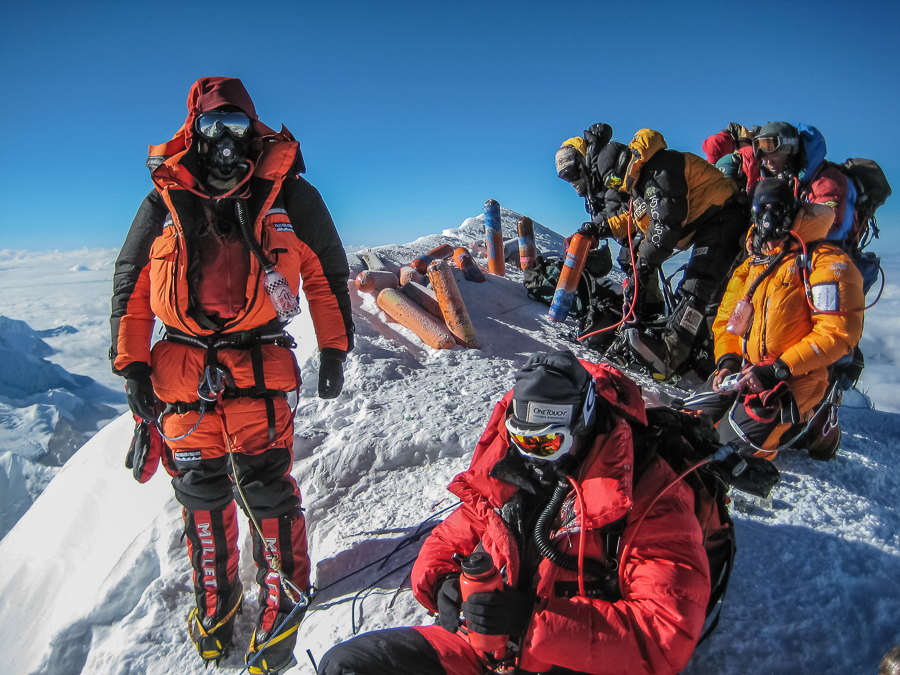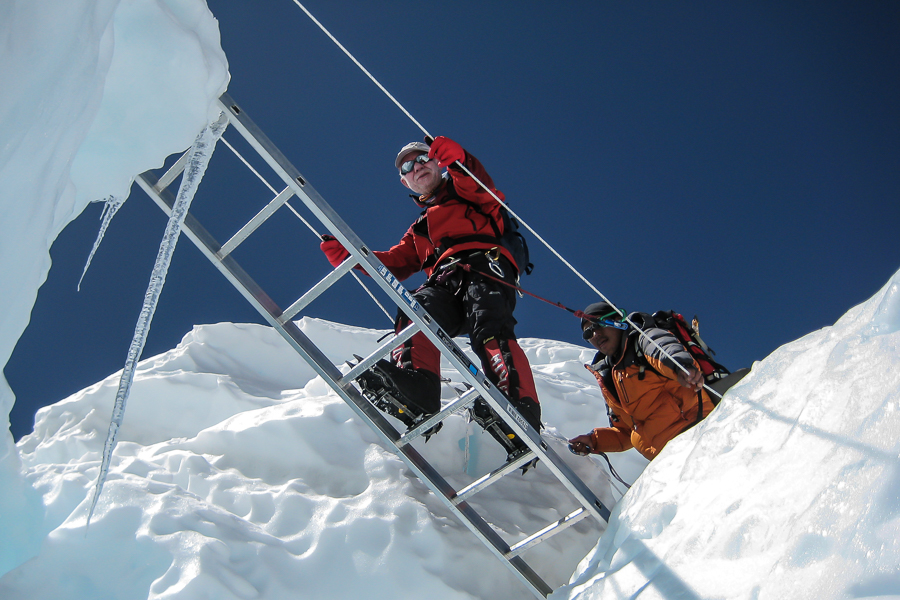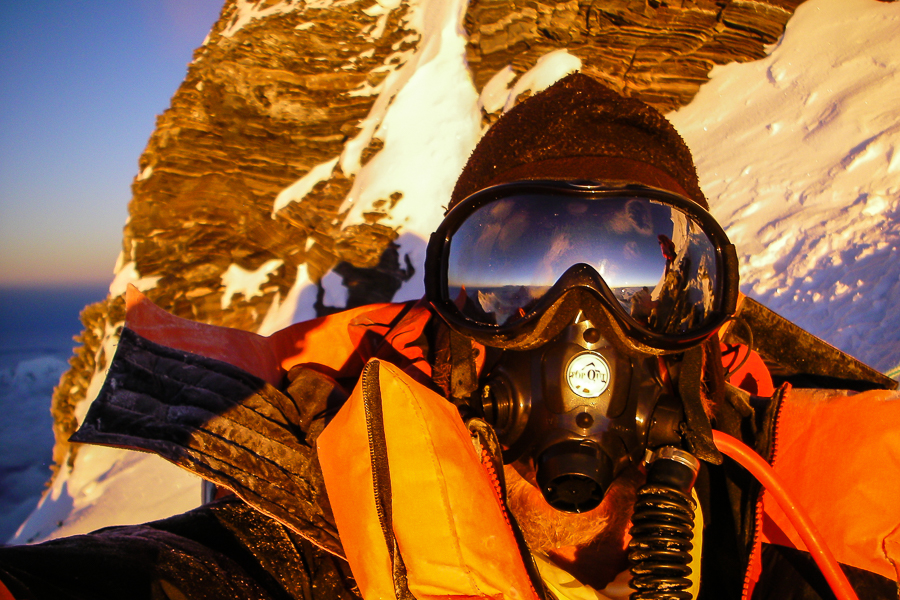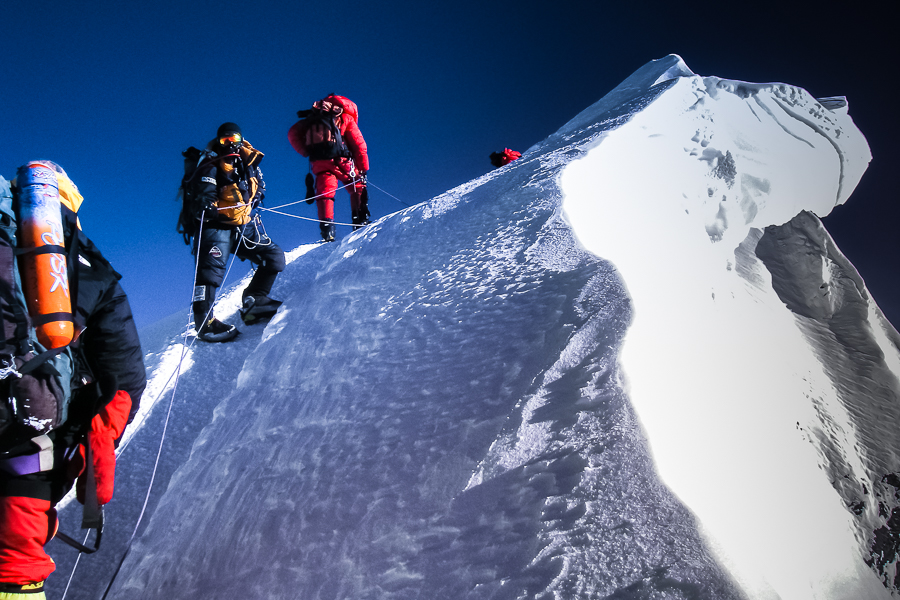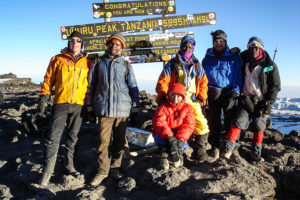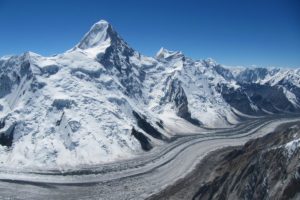Mt Everest, Nepal
Join Canada West Mountain School on one of our small-group expeditions to climb Mt Everest, the highest peak in the world. Our teams will climb the 29,028′ (8,848m) peak via the Southeast ridge from Nepal, lead by Everest Guides John Furneaux and Brian Jones. We will also be joined by a support team of trekkers who will accompany us into Base Camp on our Mount Everest Base Camp Trek.
$68,000.00
- Canada West Mountain School has been running successful expeditions to climb Mount Everest in Nepal since 2008. We have developed close relationships with our Nepalese staff and support organizations in order to run a well supported and safe expedition. All aspects of the climb - starting with the team's preparation and ending with your return home - are carefully considered and looked after.
The costs involved in organizing and running an expedition to the summit Mt Everest are not insignificant. Our philosophy is that most people do not want to attempt Everest more than once, so we do everything possible to ensure that your first visit to the mountain is as successful as possible.
The Canada West Mountain School 2017 Mount Everest Expedition includes:
- All accommodation in Kathmandu prior to the climb
- All guiding services with Everest-experienced IFMGA Mountain Guides on the mountain at all times
- High altitude Climbing Sherpa support
- 1:1 ratio of Guides and/or Climbing Sherpas to climbing team members above Base Camp
- Expedition cooks (Base Camp and Camp II), Base Camp Staff, Base Camp dining tent and Camp II dining tent
- Expedition Base Camp doctor services
- All expedition food - North American and Nepalese
- All Expedition high-altitude tents
- Oxygen and regulators for High Altitude use, 8 bottles per person
- All technical climbing equipment and fixed ropes services
- All accommodation and meals while on approach in Nepal
- All Porter support to Base Camp
- All domestic flights and ground transportation as required
- Peak permit fees, liaison officer and interpreter
- summit bonuses and gratuities for porters and staff
- Use of Satellite Phone at all camps
-
Everest fees do not include the following:
- Meals during Kathmandu stay
- Personal clothing, footwear and equipment - see Everest Gear List for details
- Medical travel and rescue insurance - Required (*)
- International air tickets
- Personal Visa for Nepal
- Airport departure tax
- Telephone charges
- Alcoholic beverages and items of a purely personal nature
- Any excess baggage fees
- Any fees or charges as a result of delays or changes to the itinerary
- Costs associated in case of early departure before expedition ends
- Accommodations in Kathmandu after the climb is over
- Itinerary
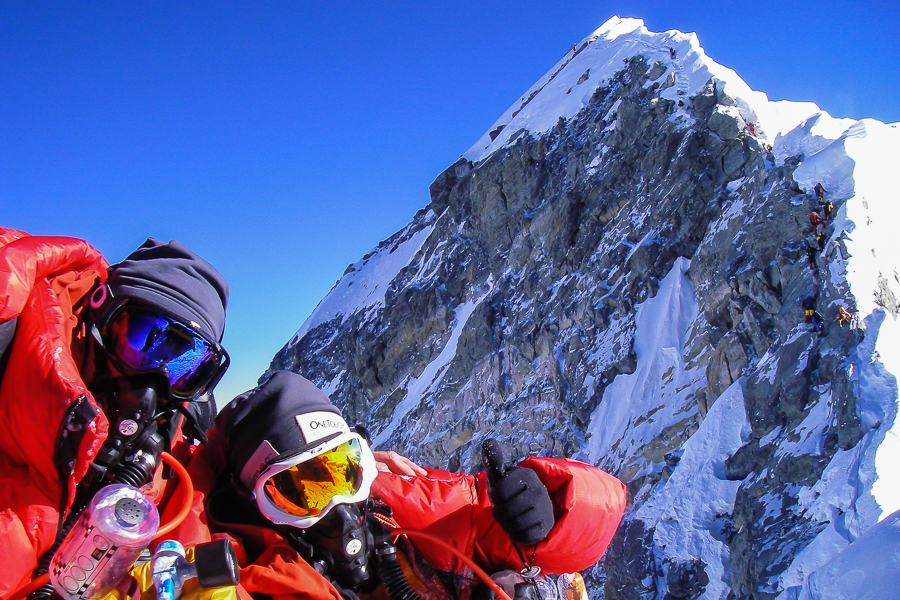 The total length of the Expedition will be 60 days return from Kathmandu. We will fly from Kathmandu to Lukla in Nepal, before trekking into base camp, using the time to acclimatize. We feel that one of the most important aspects to a successful summit attempt is proper preparation, including acclimatization. We do not use helicopters to access the upper Khumbu region to speed the ascent; rather, we use the approach to ensure everyone is acclimatising well, a chance for the team to start working together and also to get to know the local Sherpa staff and customs.
The total length of the Expedition will be 60 days return from Kathmandu. We will fly from Kathmandu to Lukla in Nepal, before trekking into base camp, using the time to acclimatize. We feel that one of the most important aspects to a successful summit attempt is proper preparation, including acclimatization. We do not use helicopters to access the upper Khumbu region to speed the ascent; rather, we use the approach to ensure everyone is acclimatising well, a chance for the team to start working together and also to get to know the local Sherpa staff and customs.
The following itinerary allows enough time for proper acclimatization, extra rest days and opportunities to return to base camp, where you can rest at a lower altitude, eat well and replenish your strength. The weather at this time of year is normally quite good and stable, though as with any mountain of this size you should come prepared for any possible weather.
Kathmandu
On the first day of the Expedition you will meet with your Guides and teammates in Kathmandu (March 26, 2017). We spend a few days in Kathmandu checking over gear and arranging all the final details before departing for the mountain.Lukla to Base Camp
After our preparations are complete in Kathmandu we will fly to the Himalayan town of Lukla, at 2,860 meters (9,000'). Here we start our 10-day trek into Everest Base Camp. The trek in is an excellent trip in itself, passing through the small villages of Namche, Tengboche, Pheriche and Lobuche. This is a critical time of acclimatization so we will be taking our time and enjoying the sights, visiting monasteries and getting to know the local peoples and culture.Base Camp
Once at Base Camp at 5 335m (17,500'), we will be acclimated and ready for our stay at Base Camp where we will prepare for the upper mountain. Our expedition Base Camp will be well established with cook tent and communal eating area, along with satellite phone and internet access via satellite. Solar charging systems are in place to re-charge camera, videos and music player batteries. Base Camp staff will be on hand at all times to ensure that whenever you are in Base Camp you will be well fed, and be able to truly rest and conserve your strength for the upper mountain. Each team member will have their own private tent for sleeping at Base Camp.Above Base Camp
Above Everest Base Camp we will establish 4 camps before being positioned for the summit bid. This process will take a couple of weeks as your Guides and Sherpa staff move up and down the mountain to fix lines, establish camps and ferry loads to the upper mountain. Team climbers will be equally busy acclimatizing by moving up and sleeping at high camps, then returning to lower elevations to recover and get stronger. Our Everest veteran IFMGA Mountain Guides and High Altitude Sherpas will be part of the climbing teams at all times on the upper mountain, as well as setting up the camps and establishing the lines.Camp locations
Camp I at 6,000m (19,685') is located at the top of the Khumbu icefall. Beyond C1 we will travel up the Western Cwm to set up Camp 2 at 6,400m (21,000') at the bottom of the Lhotse face. The climb up the Lhotse Face to gain the south col of Everest is too long to do in one push, so Camp 3, at approx 7,200m (23,650'), will be established part way up the face. At 7,950m (26,085') Camp 4 in the South Col will be our final camp before the summit push to the summit at 8,850m (29,035ft).Summit day
Our strategy is to climb to the summit early in the day so that there is ample time to return ot high camp before afternoon weather changes, and also to allow for unforeseen delays. The summit team will arrive in Camp 4 after a climb up the Lhotse Face from C3. They will spend one night and the following day resting, eating and drinking, and preparing for the summit push. On the 2nd evening, the team will leave Camp 4 at 8 pm and begin the long climb from the South Col towards the summit. Fixed lines are established for this section of the route, so climbing by headlamp in the night is not a problem.Climbers can expect to arrive at the South Summit sometime around sunrise, with the final stretch of climbing, including the Hillary Step, completed in the early morning sunlight. After a visit to the main summit of Mount Everest, the descent back to Camp 4 involves retracing the route and using the fixed lines to safely and quickly return to the safety of your camp.
Oxygen
While climbing Mount Everest can be achieved without supplemental oxygen, it increases the risks and difficulty exponentially. At the summit of Mount Everest, the atmospheric air pressure is 33% of sea level, with an equivalent drop in available oxygen. For these reasons the vast majority of climbers (including high altitude Sherpas) will use bottled oxygen at some point on their climb, usually starting at Camp 3.On the Canada West Mountain School expeditions, every team climber will have access to 8 bottles of oxygen, a regulator and re-breather mask made by TopOut specifically for Everest-style high altitude climbers. All Sherpa staff are also supplied with oxygen to ensure their safety while working on the upper mountain.
Oxygen is typically reserved for use at, and above, Camp 3. Climbers will ascend to C3 without using bottled oxygen, but will start using a low-flow system for sleeping at night. This helps with the acclimatization process and ensures climbers are well rested and healthy for the summit push.
Above C3 climbers will use oxygen for travel and for sleeping. Part of our strategy is to pre-place oxygen at the higher camps, and on summit day oxygen is pre-placed high on the route so fewer bottles need to be carried during the actual summit attempt. All empty bottles are retrieved and carried off the mountain.
